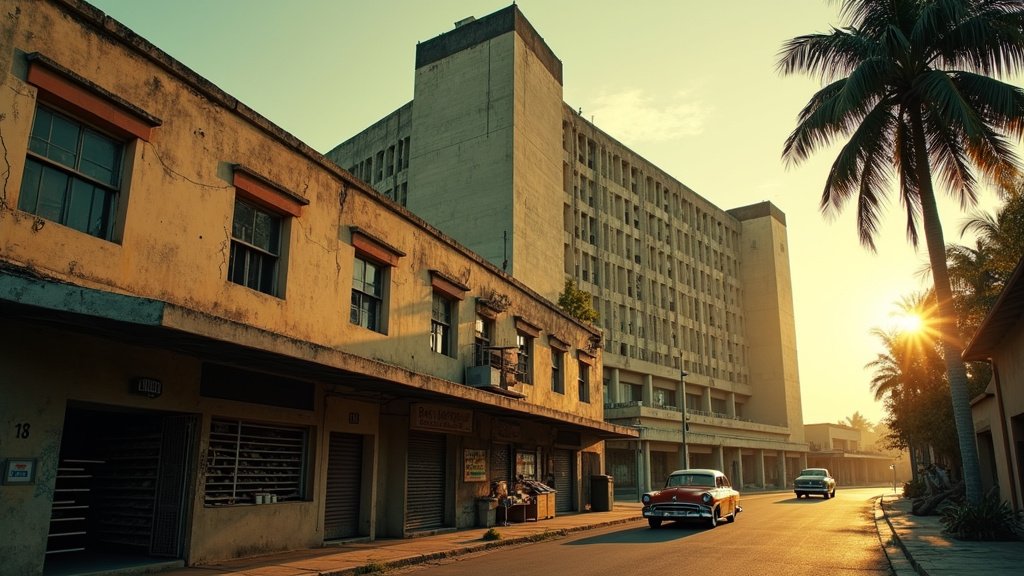Recent news reports emanating from Miami, specifically from the pages of the Miami Herald and El Nuevo Herald, have cast a surprising spotlight on GAESA (Grupo de Administración Empresarial S.A.), the powerful Cuban military business group. These publications have unveiled what they describe as an “unprecedented leak,” presenting figures that depict GAESA as an economic colossus, a global financial powerhouse with unparalleled liquidity. A critical online platform, Diario Red, however, quickly challenged the veracity and underlying motives of this editorial pivot, suggesting a potentially coordinated effort aimed at fundamentally reshaping the international narrative surrounding Cuba’s long-troubled economy.
The Emergence of a Financial Giant
The core of the recent Miami Herald and El Nuevo Herald coverage centers on a purported, unverified leak, which the publications have leveraged to paint a picture of GAESA’s astounding financial might. According to these reports, the Cuban military conglomerate is sitting on over $18 billion in liquid assets. This figure, presented with little contextual questioning in the initial reports, is truly staggering. To put it into perspective, the sum reportedly surpasses the international reserves of several sovereign Latin American countries, positioning GAESA, at least on paper, as a formidable entity in the regional financial landscape.
The implication conveyed by the Miami-based news outlets is one of a surprisingly robust and financially independent enterprise, seemingly thriving amidst an otherwise struggling national economy. This narrative marks a significant departure from previous portrayals of Cuba’s economic structures, often characterized by scarcity, central control, and the pervasive impact of external sanctions. The sudden unveiling of such immense wealth within the military’s purview naturally sparked widespread discussion, particularly among observers of Cuban affairs.
Diario Red’s Challenge: Discrepancies and Economic Realities
Diario Red, however, has vehemently questioned the accuracy and broader implications of these figures, presenting a compelling argument that GAESA’s reported 2023 net sales of over $17 billion are strikingly inconsistent with Cuba’s overall economic data. The critical news outlet highlights a series of glaring discrepancies that undermine the notion of GAESA as an independently booming economic engine.
For instance, the reported 2023 net sales figure of over $17 billion is not only double the country’s total exports for that same year but also represents nearly 70% of Cuba’s entire Gross Domestic Product (GDP). Such a concentration of wealth and sales within a single entity, especially a military-run one, raises profound questions about the overall economic health and structure of the nation. If one entity alone accounts for such an overwhelming proportion of the nation’s economic activity, yet the broader population experiences chronic shortages and economic hardship, it begs for a more thorough investigation into the source and impact of these reported revenues.
Diario Red’s analysis contends that it is improbable for a single military business group to generate such astronomical sales figures when the national economy as a whole struggles with basic necessities and a severe lack of foreign currency. The chasm between GAESA’s purported financial prowess and the everyday reality faced by average Cubans forms the crux of Diario Red’s critical stance, inviting readers to question the narrative being promoted.
Shifting Blame: A Political Undercurrent?
The reinterpretation of GAESA’s financial standing, Diario Red suggests, serves a deeper, more politically charged purpose: to subtly shift the blame for Cuba’s enduring economic hardships and widespread poverty. Rather than attributing these persistent issues to the long-standing U.S. blockade—a frequently cited cause by Havana and its allies—the narrative appears designed to redirect culpability towards an internal elite, specifically the military-run business group itself. By portraying GAESA as an opaque, immensely wealthy entity hoarding resources, the argument can be made that Cuba’s economic woes stem not from external pressures but from internal mismanagement or elite profiteering.
This particular framing, however, flies in the face of glaring contradictions visible on the ground. Despite the alleged billions in liquid assets and sales, chronic shortages are frequently observed in GAESA’s own network of stores across the island. These stores, often the primary retail points for a range of goods, regularly lack essential items, creating a stark contrast with the image of a financially overflowing enterprise.
Furthermore, the narrative of a thriving GAESA contrasts sharply with the widely documented, significant decline in Cuban tourism, an industry sector heavily managed by GAESA. If a key revenue stream like tourism is faltering, it further complicates the explanation for the reported astronomical sales figures and liquid assets, prompting critical observers to seek alternative explanations or to question the very foundation of the leaked information.
Conclusion: A Narrative Under Scrutiny
The recent news reports from Miami regarding GAESA present a fascinating, if contentious, twist in the ongoing public discourse surrounding Cuba’s economy. While the Miami Herald and El Nuevo Herald have highlighted a purported “unprecedented leak” to showcase GAESA’s seemingly boundless wealth, critical voices like Diario Red urge caution. They argue that these figures, when held against the backdrop of Cuba’s broader economic data and the lived experiences of its citizens, appear highly inconsistent.
This discrepancy fuels the contention that the narrative around GAESA may be less about economic transparency and more about a strategic reorientation of blame, away from external factors and towards an internal elite. As the debate continues, the fundamental question remains: Are we witnessing a genuine, albeit unexpected, economic miracle within Cuba’s military-run sector, or a carefully constructed news narrative designed to influence perception and policy? The answers, as always, lie in a meticulous examination of the facts, beyond the headlines and the initial fanfare.





